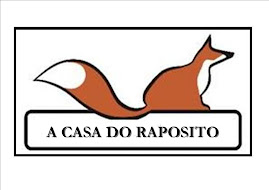 Alfonso VI, king of Leon and Castilla, was growing old, and there was still no successor to the throne. Garcia, his youngest brother had died in prison in 1090 and his other brother, Sancho, was ancient history. His only legitimate child, with Constance of Burgundy, was the Infanta Urraca who as we have seen was married to Constance's relative Raimundo. He certainly would have had his eye on the throne.
Alfonso VI, king of Leon and Castilla, was growing old, and there was still no successor to the throne. Garcia, his youngest brother had died in prison in 1090 and his other brother, Sancho, was ancient history. His only legitimate child, with Constance of Burgundy, was the Infanta Urraca who as we have seen was married to Constance's relative Raimundo. He certainly would have had his eye on the throne. Alfonso also had two illegitimate daughters, Teresa and Jimena, both by his mistress Jimena Muñoz. Teresa had married Raimundo's cousin, Henry of Burgundy who was recognised as "Count of Portugal" and the French contingent was well established. With them had come the influence of the Abbey of Cluny. But there was still no son to succeed Alfonso. Queens were not considered a viable option.
Raimundo's expectations were not without foundation. Alfonso had more or less promised him the kingship of Leon and Castilla with his bethrothal to the young Infanta. In fact, the Historia Compostelana - partisan as always - has the following to say:
"King Alfonso had caused him to come from Burgundy to Spain and had promised him all of his kingdom with a sworn oath."
Urraca had been so young at her marriage that there was no question here of a love match. The union was purely political.
Way back in 1091 - while Diego Gelmirez could only dream of greatness; and you can be sure he was - the city of Córdoba had fallen to the might of the conquering Moorish forces of the Almoravides. The widow of the governor, Zaida, took refuge first in Sevilla, but presumably didn't feel safe with her own people. She fled north and took refuge at the court of Alfonso. We learn that "her beauty and her plight softened the heart of the king, Alfonso", and we cannot discount that the promise of certain fortresses at the southern region of his kingdom would have also moved him in a more practical way. What is certain is that the elderly Alfonso's other southern regions were far from softened because in 1093, she gave birth to a son. He was called "Sancho".
This development changed everything. Sancho became the beloved of Alfonso's old eyes. The young prince was even given Toledo, now the capital in terms of centricity and power; and perhaps even more importantly, it was the site of the treasury.
This, not surprisingly put Count Raimundo's aristocratic nose more than a little out of joint!
Raimundo resented Alfonso's ambitions and Sancho's claims and he turned for assistance to the House of Cluny and in particular, Hugh, its very influential abbot.
Now having established such a firm hold in northern Spain, Cluny was not about to give it up to the fruits of a questionable Moorish liaison. The expansion of the Almoravide influence had cut off a good part of the kingdom's wealth and no longer could the king rely on the "Taifas": the tribute from the Moorish rulers of ther various disputed territories which before had been paid directly to the king.
Coffers which had previously subsidised the building of the vast Abbey of Cluny in France were now drying up and the Cluniac bishop must have had his concerns. What would become of his ambitious building programme? What would happen to the kingdom of Leon and Castille after Alfonso died? Would he partition his kingdom between Sancho, Raimundo and Henry of Portugal? Political instability would have meant disaster. Hugh was forced to take sides. Not surprisingly he went with the French contingent.
Raimundo had to do something to reclaim what he considered his "inheritance". Remember in these days women had little to say and Urraca would have been subject to Raimundo's - and naturally her father's - influence.
A secret agreement was made between the Burgundian cousins, Raimundo and Henry. A letter was sent to Hugh of Cluny which said that in gratitude of Henry's support for Raimundo, Henry would receive Portugal AND a share of the treasury of Toledo (remember - Sancho had been given this by his father). Raimundo in this way was clearly buying Henry off. No need to encourage more claimants than was necessary - cooperation was the best policy and allies were the best friends.
By 1107 - by which time Sancho was but 14 - it was very clear to all that he was Alfonso's heir.
But in the interim, Urraca had done something to gain the upper hand that was all women could do in those days: in the castle at Caldas del Rey in Galicia she gave birth to a son. His name was Alfonso. There was now a clear legitimate heir to the throne of Leon and Castille.
Whether Alfonso VI and Sancho liked it, or not, because of a male child clearly directly in the line of succession, things had become much more complicated than before!
What now?
.




No comments:
Post a Comment